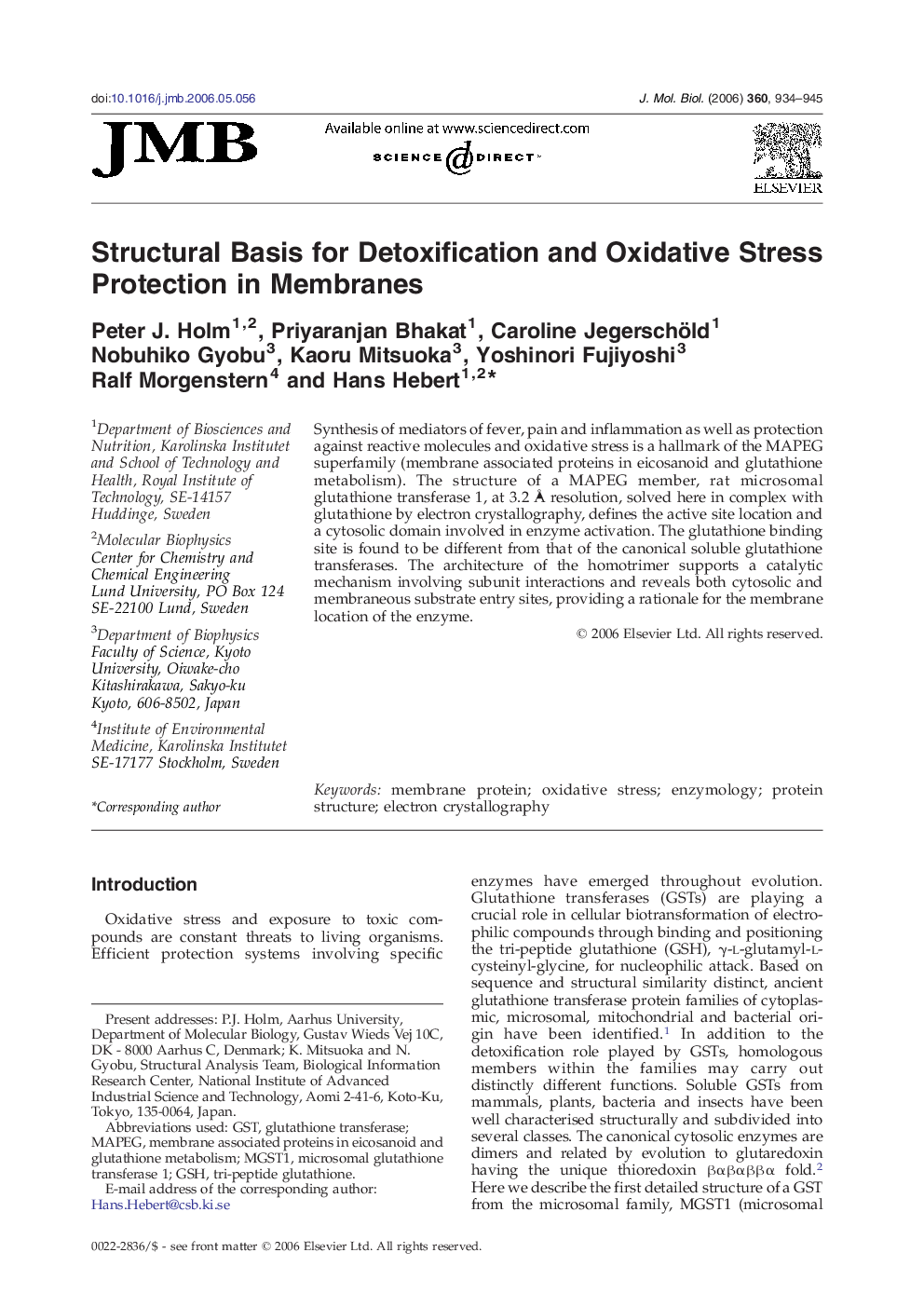| Article ID | Journal | Published Year | Pages | File Type |
|---|---|---|---|---|
| 2189276 | Journal of Molecular Biology | 2006 | 12 Pages |
Synthesis of mediators of fever, pain and inflammation as well as protection against reactive molecules and oxidative stress is a hallmark of the MAPEG superfamily (membrane associated proteins in eicosanoid and glutathione metabolism). The structure of a MAPEG member, rat microsomal glutathione transferase 1, at 3.2 Å resolution, solved here in complex with glutathione by electron crystallography, defines the active site location and a cytosolic domain involved in enzyme activation. The glutathione binding site is found to be different from that of the canonical soluble glutathione transferases. The architecture of the homotrimer supports a catalytic mechanism involving subunit interactions and reveals both cytosolic and membraneous substrate entry sites, providing a rationale for the membrane location of the enzyme.
